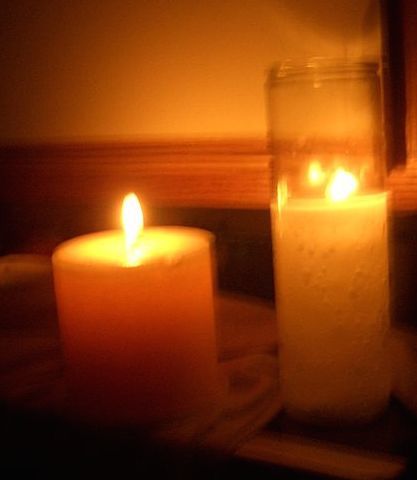Candlestic!
 Chantelle had two candles, one of which was
3
2
cm longer than the other. She lit the longer one at
3
p.m. and lit the shorter one at
7
p.m. At
9
p.m., they were both the same length. The longer one was completely burned out at
1
0
p.m. and the shorter one was completely burned at midnight. The two candles burned at different, but constant, rates. What was the sum of the original lengths of the two candles?
Chantelle had two candles, one of which was
3
2
cm longer than the other. She lit the longer one at
3
p.m. and lit the shorter one at
7
p.m. At
9
p.m., they were both the same length. The longer one was completely burned out at
1
0
p.m. and the shorter one was completely burned at midnight. The two candles burned at different, but constant, rates. What was the sum of the original lengths of the two candles?
For more problems ,click here .
The answer is 52.
This section requires Javascript.
You are seeing this because something didn't load right. We suggest you, (a) try
refreshing the page, (b) enabling javascript if it is disabled on your browser and,
finally, (c)
loading the
non-javascript version of this page
. We're sorry about the hassle.
3 solutions
Let the length of the smaller candle be x cm. The length of the longer candle becomes ( x + 3 2 ) cm.
Now, the longer candle took 1 0 − 3 = 7 hours to burn. Hence, its rate of burning is 7 x + 3 2 cm per hour.
Similarly, the smaller candle took 1 2 − 7 = 5 hours to burn. Hence, its rate of burning is 5 x cm per hour.
At 9 P.M., the lengths of the candles were the same.
At 9 P.M., for the longer candle, 9 − 3 = 6 hours had passed. This means that 6 × 7 x + 3 2 = 7 6 ( x + 3 2 ) cm of the candle was burnt, so the remnant portion of the candle was of length ( x + 3 2 ) − 7 6 ( x + 3 2 ) = 7 x + 3 2 cm.
Similarly, at 9 P.M., for the shorter candle, 9 − 7 = 2 hours had passed. This means that 2 × 5 x = 5 2 x of the candle was burnt, so the remnant portion of the candle was of length x − 5 2 x = 5 3 x cm.
Hence, 7 x + 3 2 = 5 3 x , which when we solve gives us x = 1 0 .
Thus, the sum of the lengths of the two candles is x + x + 3 2 = 5 2 cm.
Let La=length of the short candle
Lb=length of long candle =La+32
Ra= burning rate of candleA
Rb=burning rate of candleB
Y=the same length of the two candles @ 9pm
Ra=La /(12-7) = La / 5
Rb=La+32 /(10-3)=La+32 /7
Y=Ra×(12-9)=3Ra
And Y is also=Rb×(10-9)=Rb×1
3Ra=Rb
3(La / 5) =(La+ 32) /7
21La=5 La+ 160
La=10 cm. and Lb=10+32=42cm
La+Lb=10+42 = 52 cm.
From the time the two candles are at the same length, it takes the initially shorter candle three times as long as the initially longer one to burn out. So if the burn rate of the shorter candle is y cm/hr then the burn rate of the longer candle is 3 y cm/hr.
Now as the the longer candle takes 7 hours to burn out and the shorter one 5 hours, and since their initial difference in length is 3 2 cm., we have that
7 ∗ 3 y − 5 ∗ y = 3 2 ⟹ 1 6 ∗ y = 3 2 ⟹ y = 2 cm/hr.
Thus the original length of the longer candle was 3 ∗ 2 ∗ 7 = 4 2 cm and that of the shorter candle was 2 ∗ 5 = 1 0 cm, giving a sum of 5 2 cm.